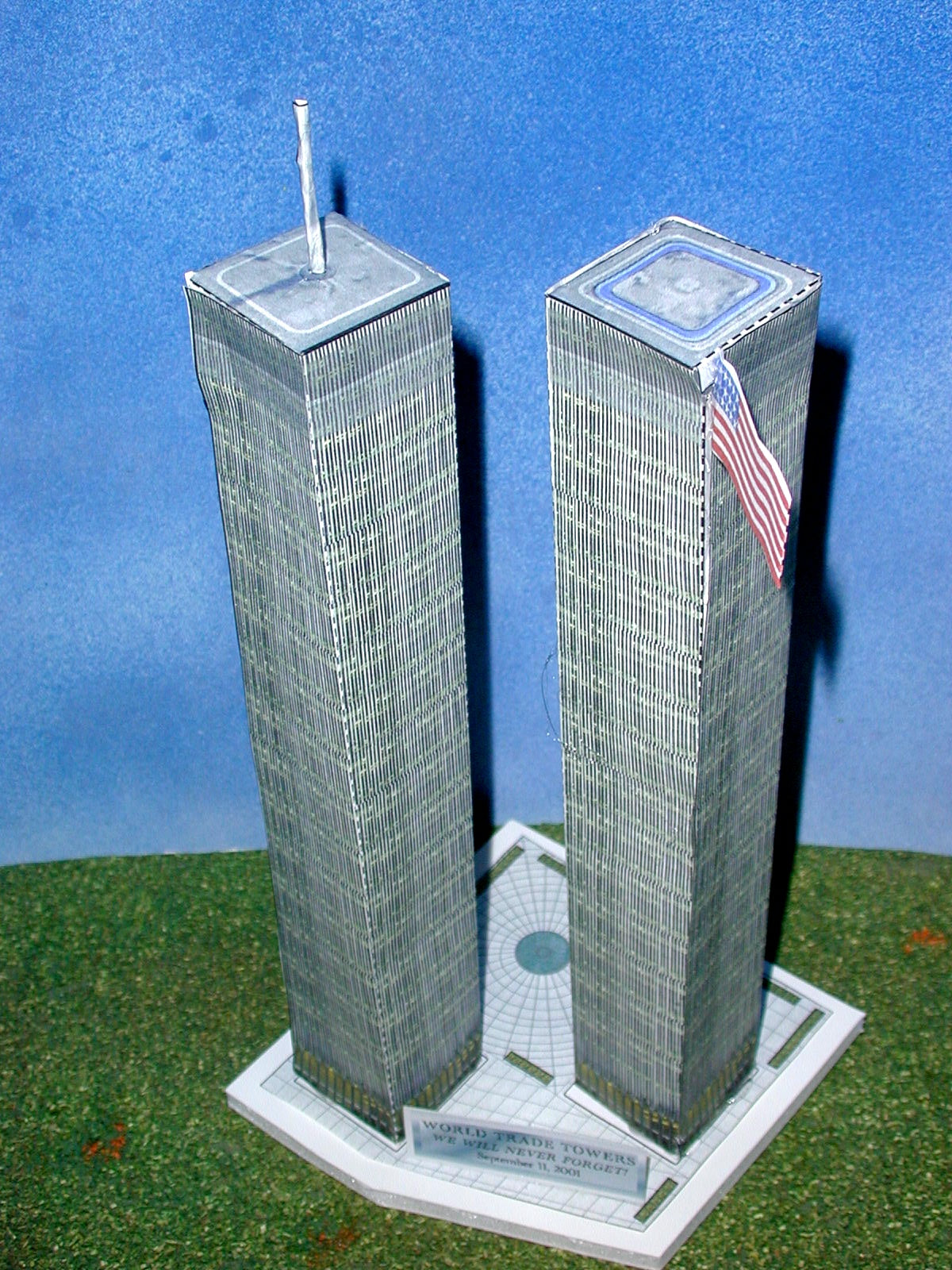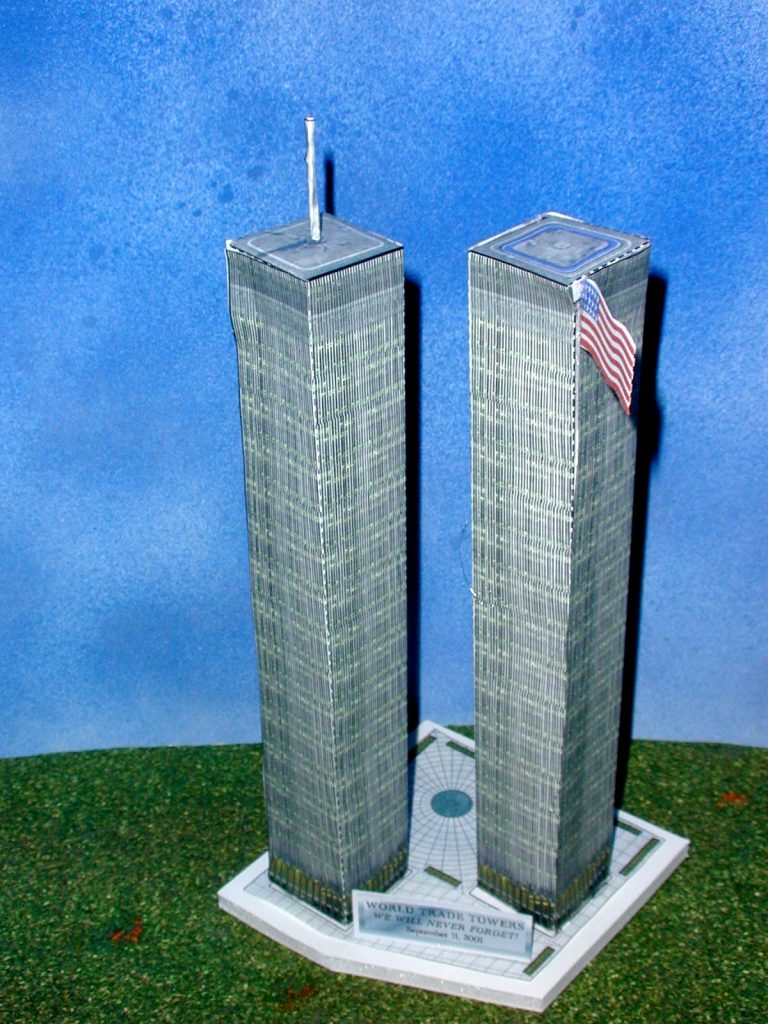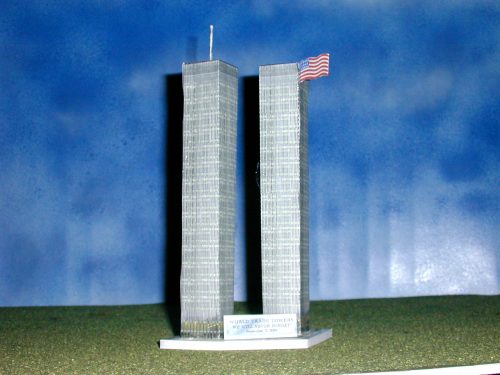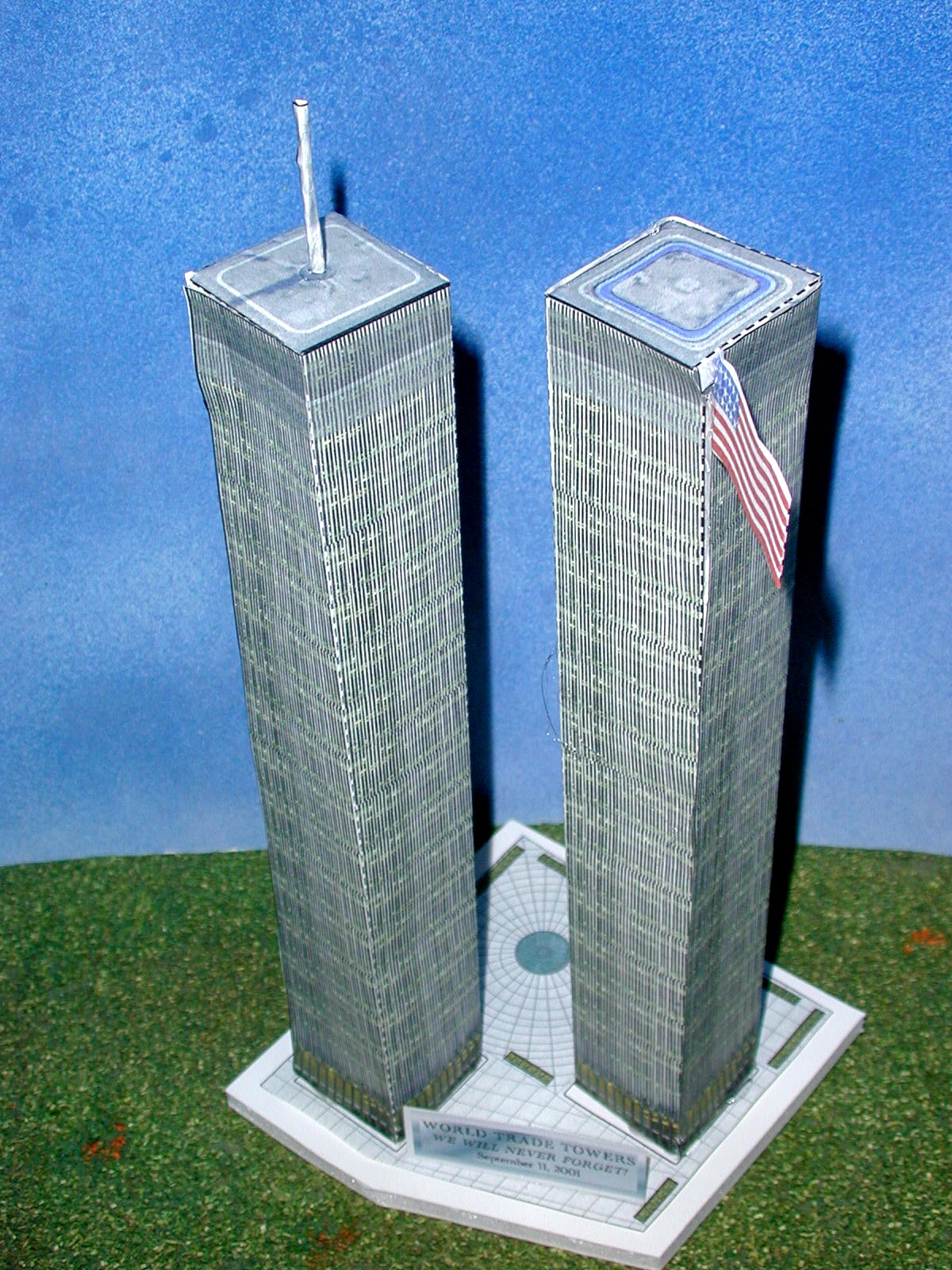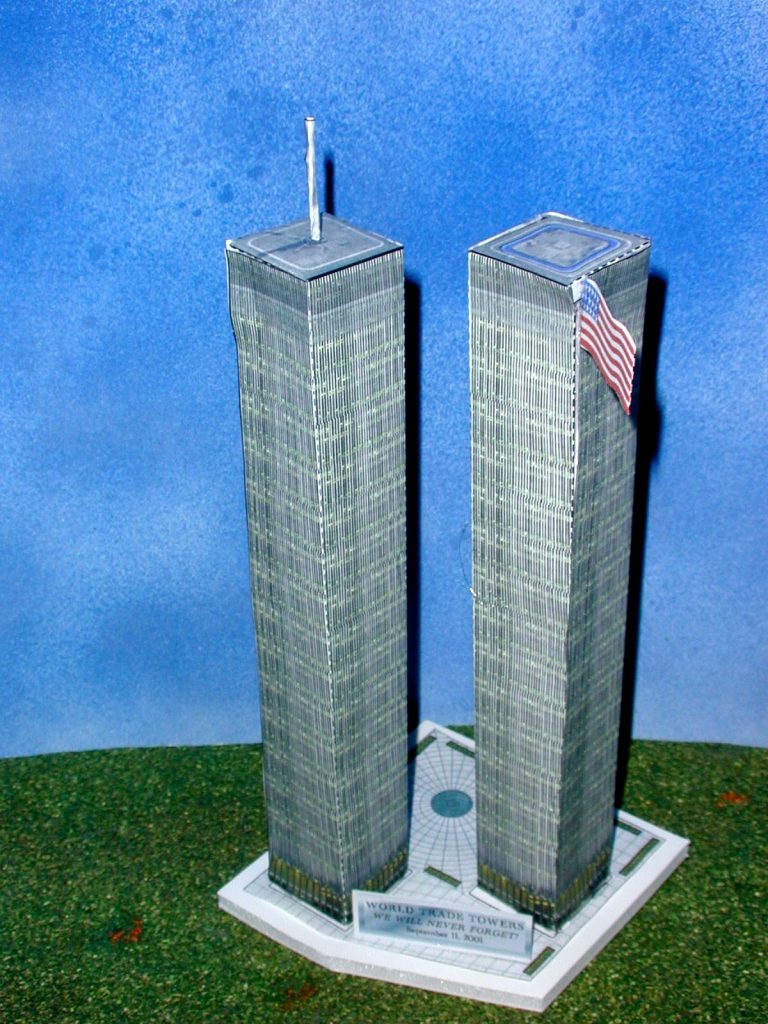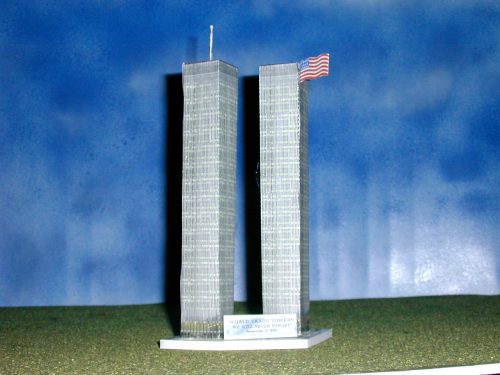World Trade Towers - New York, New York - Free
World Trade Towers - New York, New York - Free
Couldn't load pickup availability
Have a school project due? Want extra credit? These models are perfect for that last minute project!
Download or Pre-Printed
All models can be purchased for immediate Download (pdf) starting at only $9.95 for the 7"x10", printed on any standard home or office printer,. You will receive a download BUTTON on your confirmation page once you completed your order.
Our pre-printed shipped kits are printed on high quality color printers on thick card stock 60#+ paper for durability and mailed to you.
Shipping
We offer First-Class Parcel, 1-3 day shipping ($3) via United States Postal Service. Contact us if you want Tracking ($8) or Overnight Shipping ($28) at Sales@PaperModelsOnLine.com.
Your Best Way To Get An "A"!
The Buying Process

That's it!
Typical Sample
 |
 |
 |
| Exploded View | Sample Pieces | Finished Model |
Free History For Your Report
WORLD TRADE TOWERS History and Statistics
World Trade Center
New York, New York, U.S.A.
©
Statistics:
• Built: 1970 – April, 1977
• Location: New York, New York, USA
• Completion Date: 1972 (Tower One), 1973 (Tower Two); destroyed September 11, 2001
• Budget: $500 million
• Cost: $400 million
• Height: 1,368 feet (Tower One), 1,362 feet (Tower Two)
• Stories: 110 each
• Structural Materials: Steel
• Facing Materials: Aluminum, steel
• Architect(s): Minoru Yamaski & Associates, Architect, with Emery Roth and Sons
• Engineer(s): Skilling, Helle, Christiansen & Robertson
• Tower One was 1,368 feet (414 meters) tall;
• Tower Two was 1,362 feet (412 meters) tall;
• The Tower facades were constructed of aluminum and steel lattice;
• The Tower floors were prefabricated trussed steel, 33 inches deep;
• The Towers used tube construction with closely spaced columns and beams on the outer walls;
• There were no interior columns in the Tower office spaces;
• The Towers rested on solid bedrock. The foundations extended more than 70 feet below ground;
• Each tower contained 104 passenger elevators;
• Both towers had 43,600 windows;
• Approximately 50,000 people worked in the World Trade Center complex;
• The two towers contained nine million square feet of office space (nearly one acre per floor);
• Owned and operated by the Port Authority of New York and New Jersey.
• The site contained 16 acres with buildings grouped around a five acre central plaza;
• The site is bounded by Vesey Street on the north, Church Street on the east, Liberty Street on the south, and West Street on the west, about three blocks north of the New York Stock Exchange.
• The Observation deck, South Tower, WTC 2, floor 107 (summer hours were 9:30am to 11:30pm).
• Skylobbies on floors 44 and 78 were served by high speed elevators.
• The site contained seven underground levels including services, shopping, and a subway station.
The two nine story Plaza Buildings, with roughly ell-shaped plans, flanked the main entrance to the complex from Church Street, with WTC 4 on the south and WTC 5 on the north.
The World Trade Center was located in lower Manhattan and consisted of two, 110 stories towers (known as the “Twin Towers”) and five smaller buildings. These towers were the tallest buildings in New York City and-the 3rd tallest sky scrapers in the world.
Ground breaking for construction was on August 5th, 1966. Steel construction began in August 1968.- First tenant occu pancy of One WTC was December, 1970, and occupancy of Two WTC began in January 1972. Ribbon cutting was on April 4, 1973.
Both the Gallery on the 107th floor and the Observation Deck on the 110th floor (the world‘s highest open-air viewing platform) provided breathtaking views of all of New York City. These buildings were completed in April 1973. The buildings were light, economical structures designed to keep the wind bracing on the outside surfaces.
Constructed by the Port Authority of New York and New Jersey in the early 1970s, the World Trade Center towers were, for their time, the best known examples of tube buildings. Tube buildings are strengthened by closely spaced columns and beams in the outer walls. The closely spaced columns and beams in each tower formed a steel tube that, together with an internal core, withstood the tremendous wind loads that affect buildings this tall.
Aside from withstanding enormous wind loads, the World Trade Center towers were also constructed to withstand settlement loads. Because the towers were built on six acres of landfill, the foundation of each tower had to extend more than 70 feet below ground level to rest on solid bedrock.
Share
